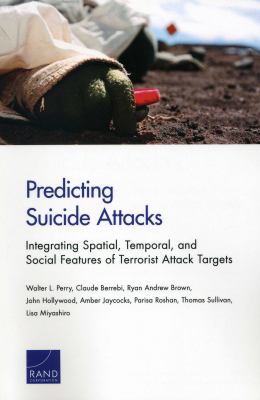
e-Book
|
Predicting suicide attacks : integrating spatial, temporal, and social features of terrorist attack targets
Copies
0 Total copies, 0 Copies are in,
0 Copies are out.
Title
Predicting suicide attacks : integrating spatial, temporal, and social features of terrorist attack targets
Call No
HV6433.I75
Digital Link
Authors
Subjects
Language
English
Published
Santa Monica, CA : RAND, 2013.
Publication Desc
1 online resource (xxv, 85 p.) : ills. (some col.), maps (some col.).
ISBN
9780833078032
(electronic bk.)
LCCN
2013011927
Series









